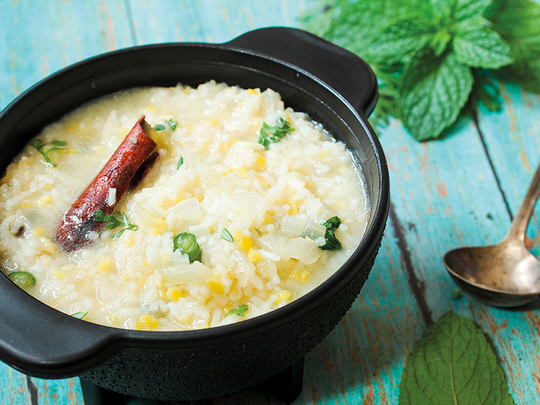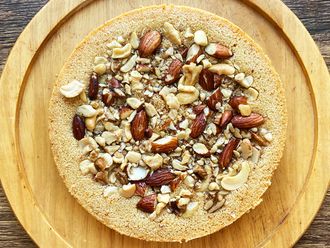
Dubai: The decision to elevate a culinary endeavour to the status of a national dish is arrived at in different countries for different reasons, both empirical and non-empirical. One of the clinching factors in this process is the mood palate of the people. In other words, ‘comfort food’ level can play a big role in defining the fate of a dish aiming to take its place at the top.
Picking a national dish is an inexact science that shows no deference to either the sophistication of the ingredients used or the exacting method of preparation. Certain dishes acquire a national dish status simply by virtue of the emotional response they evoke in people or their cultural lineage and yet, this exalted status can be contested by others with a culinary obsession, and reasons, of their own.
Last week, the Indian government decided to designate the humble khichdi, one of the most popular foods in the country, as the national dish to popularise it in global markets. A dish made from rice, lentils, spices and vegetables, in varying proportions based on regional preferences, the khichdi’s versatility lends itself to being a delectable one-pot meal for any occasion including for convalescents owing to its nutrient density.
The khichdi’s appeal goes beyond culinary borders; in fact, it has attained emblematic heights. Given its powers of assimilation and endless adaptability while retaining its fragrant, comfort food virtue, khichdi is considered by many Indians as a symbol of India’s great culture of unity in diversity.
At the World Food India conference held from November 3-5 in the country’s capital New Delhi, well-known Indian chef Sanjeev Kapoor cooked 1.800 kilograms of Brand India Khichdi to set a world record using 800kg of grains.
Prepared using rice, moong beans, amaranth, jowar, bajra, barley and Indian spices, the khichdi was distributed to visitors including ambassadors and delegates from over 60 countries at the food conference.
Commenting on the food’s appeal across the Indian socio-cultural and socio-economic strata, Harsimrat Kaur Badal, Minister for Food Processing Industries said, “Khichdi is considered [the most] nutritious, healthiest food in India and is eaten by poor and rich alike. It symbolises India’s great culture of unity in diversity. So it has been selected as the brand of Indian food,” Badal said. The government of India has also expressed its desire to popularise khichdi and its recipe in restaurants and kitchens throughout the world via Indian foreign missions.
According to food historians, the more complex and diverse a country’s ethnic matrix, the more contentious it can be to pick a national dish, or even two.
(With inputs from IANS)
















